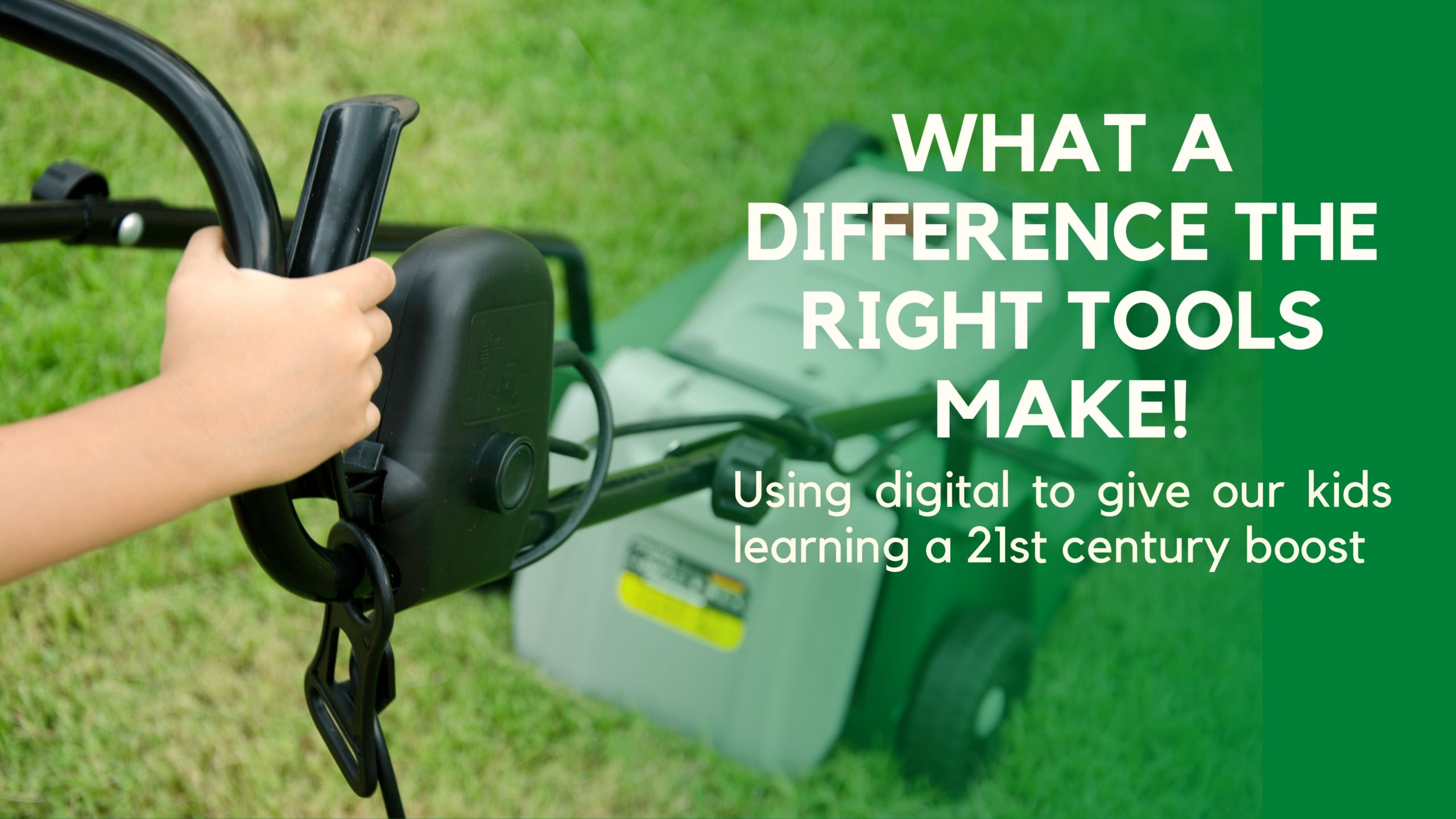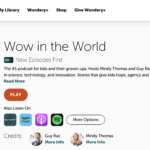Imagine a chaotically overgrown lawn – the grass is almost to your knees, the shrubs look like mini sequoias, and only in a few places can you see the gray sidewalk peaking shyly from under a thick layer of weeds. A few decades ago, you’d be right to feel sorry for whoever was tasked with taming this particular portion of mother nature. It could take several people days of toil and the outcome would not even look like the pristine cuts we’re used to.
Today, in a mere matter of hours, a single spindly teenager can make a transformation to that lawn that would have been the stuff of dreams in the past. What’s the difference? A lawn mower, an edger trimmer, and maybe a leaf blower/vacuum. Tools. The right tools make all the difference.
Using Digital Learning Resources to Give Your Kids a 21st Century Boost
So you probably guessed that the lawn tools are a metaphor for all the tools we have at our disposal to help our kids learn in our information age. Kids today may be born with their eyes wide open and seemingly ready to do long-jump (have you seen those covid babies!) but just like in the past, they’ve got a lot of learning to do. The learning resources themselves are widely available – when was the last time you were more than 20 feet from a phone, tablet or computer? The problem is that while they are available, they are not widely accessible. Aneta literally fixes that issue, so that’s not what this blog is about. What we share this week is a reminder of what makes digital a wondrously powerful tool for learning.
The Unique Power of Digital Learning Resources
Think of how you had to learn whatever topic, concept or entire subject you hated. Why did you hate it? Often the problem is how baffling or even worse, how boring a topic is. You probably hated it because you were being required to learn it in a way, place or time that didn’t mesh with your soul. Well, you can be sure that there is probably an app, or a couple dozen videos and games that explain it so clearly and relatably that you’ll wonder why you ever found it impossible. We have this now for our kids. Why would we not use it!!
So this week, we’re bubbling up just 3 of the many ways in which a digital is a 21st-century tool for kids’ learning that would be ridiculous not to use. As ridiculous as if someone today chose to tackle the chaotic lawn with nothing but a hand trowel instead.
What Makes Digital a Powerful Learning Tool for Kids?
Kids Learning Tools Are Good at Being Fun!
When it comes to introducing intrigue, excitement and anticipation – all key ingredients for fun, nothing holds a candle to digital. You have not seen a child learn her numbers as quickly as when she needs to keep track of her score to beat her big sister in a bubble popping game. That same child who would push back if asked to sit and recite numbers will pick it up without even realizing
Digital Learning Tools Make It Easy for Kids to Learn at Their Own Pace
Digital personalizes with the easy of an edge trimmer cutting through stubborn brush. Ah, it is such a gratifying feeling – both watching the brush come down and watching a child with their new found freedom to go through material at the pace that works for them suddenly begin to flourish. When you think about it, it is quite ridiculous to expect every child of the same age to be at the same place at the same time in their learning. Where does this ever happen in nature.
Digital Learning Allows Kids to Follow Their Interests
Beyond fundamental stepping stones, one can argue that there is no order to learning. If a child wants to learn about metamorphosis and the butterfly life cycle before they can count to 5, why shouldn’t they? Digital and the ease with which content can be created has made it possible for there to be more than a few options of resources for explaining butterfly life cycle to a 4 year old. If we were still using expensive printing press to produce material, who would ‘waste’ this resource to target customers who couldn’t even read.


